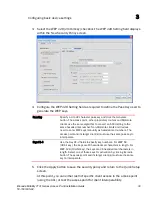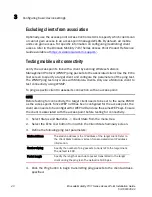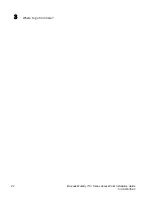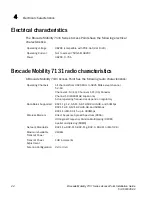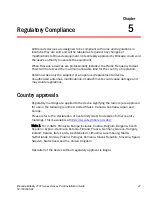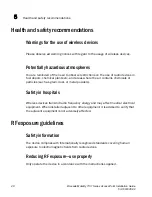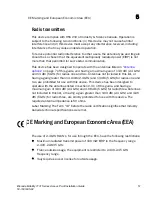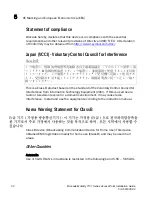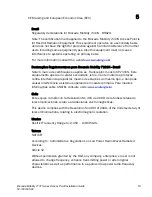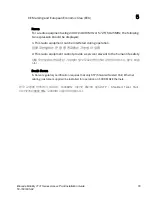
CE Marking and European Economic Area (EEA)
5
Brocade Mobility 7131 Series Access Point Installation Guide
51
53-1001935-02
Radio transmitters
This device complies with RSS 210 of Industry & Science Canada. Operation is
subject to the following two conditions: (1) this device may not cause harmful
interference and (2) this device must accept any interference received, including
interference that may cause undesired operation.
To reduce potential radio interference to other users, the antenna type and its gain
should be so chosen that the equivalent isotropically radiated power (EIRP) is not
more than that permitted for successful communication.
This device has been designed to operate with the antennas listed in
“Antenna
options”
on page 7 of this guide, and having a maximum gain of 13.9 dBi (2.4 GHz)
and 13 dBi (5 GHz) for radios one and two. Antennas not included in this list, or
having a gain greater than 13.9 dBi (2.4 GHz) and 13 dBi (5 GHz) for radios one and
two, are prohibited for use with this device. This device has been designed to
operate with the antennas listed in section 2.3.1 of this guide, and having a
maximum gain of 3.03 dBi (2.4 GHz) and 4.06 dBi (5 GHz) for radio three. Antennas
not included in this list, or having a gain greater than 3.03 dBi (2.4 GHz) and 4.06
dBi (5 GHz) for radio three, are strictly prohibited for use with this device. The
required antenna impedance is 50 ohms.
Label Marking: The Term "IC:" before the radio certification signifies that Industry
Canada technical specifications were met.
CE Marking and European Economic Area (EEA)
The use of 2.4GHz RLAN’s, for use through the EEA, have the following restrictions:
•
Maximum radiated transmit power of 100 mW EIRP in the frequency range
2.400 -2.4835 GHz.
•
France outside usage, the equipment is restricted to 2.400-2.45 GHz
frequency range.
•
Italy requires a user license for outside usage.



